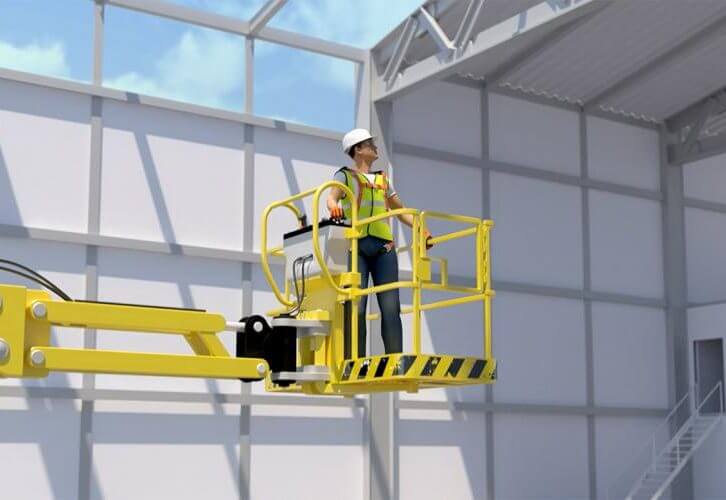
16 April, 2024
Reducing trapping and crushing injuries
Causes of entrapment
The following tasks/actions are the most common causes of entrapment, when a machine is operated close to an obstruction:
- The AWP Rising
- The operator inadvertently operating the controls (e.g knocking the controls, controls not to operator expectations)
- Reversing, slewing, or elevating into an obstruction
- Manoeuvring/positioning either the AWP platform or base unit
- Steering the AWP on full lock
- Driving the AWP forwards or telescoping in the platform
- Unexpected movement of the boom near to an obstruction/structure
- Reversing the machine’s base unit or telescoping out the platform
Increasing risk of entrapment
What increases the risk of entrapment? The points listed below may increase risk when operating an AWP close to an obstruction / structure:
- Poor AWP route planning
- Poor AWP selection and set up
- Insufficient AWP familiarisation and lack of experience
- Uneven ground especially with boom extended or elevated
- Poor visibility at height
- Poor observation, unaware of surroundings
- Distractions when operating AWP, including other occupants
- Objects placed on or near the control panel
- Overriding AWP controls and safety devices (including secondary-guarding)
- Accidental operation of controls
- Operating the wrong control or unfamiliar with controls
- Driving in the wrong direction whilst the platform is rotated
- Using faulty or poorly maintained AWPs
- Weather/environmental conditions
- Poor operator behaviour
- Lack of sufficient/appropriate supervision, such as Spotter
- AWPs should only be operated by trained operators
- High drive speeds, lack of care, overconfidence

Avoiding accidents
What can you do to avoid these kinds of accidents? It is crucial to:
- Plan the route carefully
- Select the machine carefully
- Ensure familiarisation is specific
- Ensure good ground conditions
- Ensure good visibility at height
- Not override the AWP controls or use faulty machines
- Practice the rescue procedure
- Minimise distractions
- Not obstruct AWP controls
- Slow down and look
Common rescue issues
Once trapped, rescue can often be hampered. This may occur for example when no one knows the person is trapped, the emergency rescue plan was not practised or communicated or there is no key in ground level controls, limiting the ability to use ground level controls in an emergency. Also, the AWP platform might be moved through multiple levels of steel work or complex structures, or familiarity with ground controls and emergency descent controls might be lacking.
Ways to reduce the risk of entrapment
Working close to overhead structures and obstructions should be regarded as an operation with a higher risk. If you are expected to carry out this sort of work, you should ensure that the following issues have been properly addressed and that management have explained the steps taken to minimise entrapment risks in a pre-start briefing. Follow these steps:
- Plan the AWP route carefully
- Select the AWP carefully
- Ensure familiarisation is specific
- Ensure good ground conditions
- Ensure good visibility at height
- Do not override the AWP controls or use faulty AWPs.
Has someone been trapped or crushed? REACT IMMEDIATELY! There are only a few minutes to rescue and resuscitate them. Follow your emergency rescue plan and use every second!
